Your complete guide to the Queen's funeral
 Getty Images
Getty ImagesAfter days of lying-in-state, the body of the late Queen Elizabeth II has made its final journey as part of a grand state funeral. It travelled first to Westminster Abbey, for a religious service in front of a congregation of thousands, and then to Windsor Castle for a more intimate committal service and, in the evening, a private burial.
It has been a day of emotion, pomp and ceremony the like of which has not been seen since the last state funeral, of Winston Churchill, almost 60 years ago. The Queen made personal additions to the plans, Buckingham Palace has said.
Here's how the day's events unfolded.

The Queen's lying-in-state at Westminster Hall in the heart of London, where people queued for hours to view her coffin, came to an end in the early morning. A short distance away, at Westminster Abbey, the doors then opened for guests to start arriving ahead of the funeral service at 11:00.
Heads of state from across the world flew in to join members of the Royal Family to remember the Queen's life and service. Senior UK politicians and former prime ministers were also there.
Members of royal families from across Europe, many of whom were blood relatives of the Queen, were also in attendance.

The Queen's coffin was lifted from the catafalque at Westminster Hall, where it has been resting since Wednesday afternoon, and was taken to Westminster Abbey, for her funeral service.

She was carried to the abbey on the State Gun Carriage of the Royal Navy, drawn by 142 sailors. The carriage was last seen in 1979 for the funeral of Prince Philip's uncle, Lord Mountbatten and was used for the Queen's father, George VI, in 1952.
The Queen's coffin is topped with the Royal Standard, the Imperial State Crown, the Sovereign's orb and sceptre and a wreath made up of flowers and foliage chosen by the King, picked from Buckingham Palace and the King's homes of Clarence House and Highgrove.
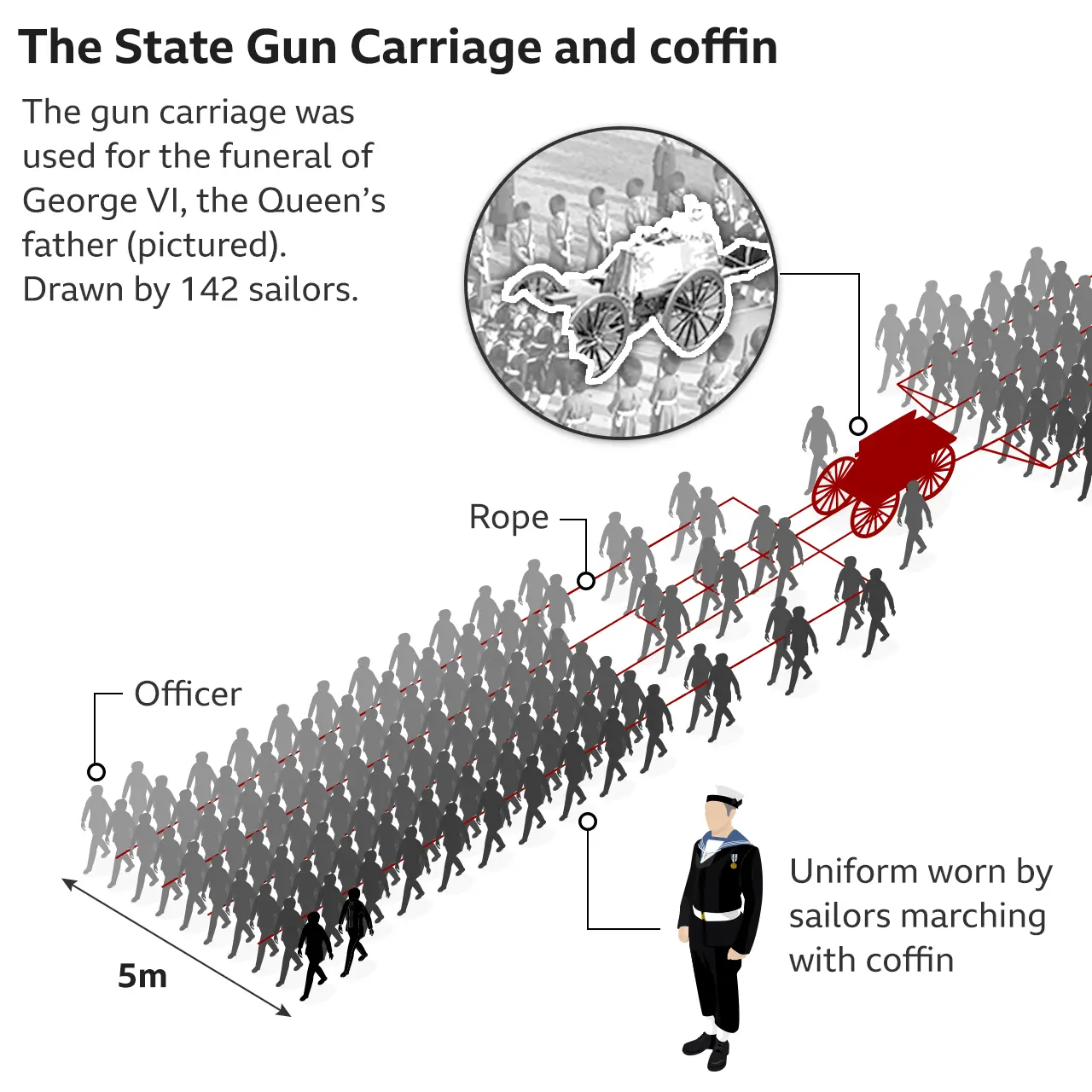
Senior members of the Royal Family, including the new king and his sons Prince William and Prince Harry, followed the gun carriage in procession.
The Pipes and Drums of the Scottish and Irish regiments lead the ceremony, along with members of the Royal Air Force and the Gurkhas.
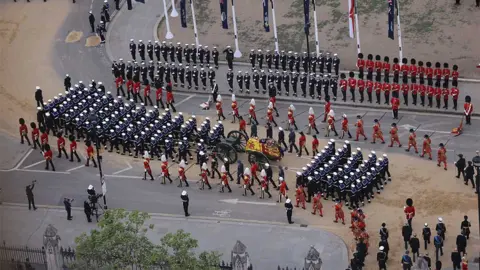 MOD
MODThe route was lined by the Royal Navy and Royal Marines and a guard of honour stood in Parliament Square made up of all three military services, accompanied by a Royal Marines band.

The Queen's life-long sense of duty was remembered at her state funeral service, attended by 2,000 guests at Westminster Abbey.
A state funeral, typically reserved for kings or queens, follows strict rules of protocol, such as a military procession.
The abbey, hosting the funeral service, is the historic church where Britain's kings and queens are crowned, including the Queen's own coronation in 1953. It was also where the then-Princess Elizabeth married Prince Philip in 1947.
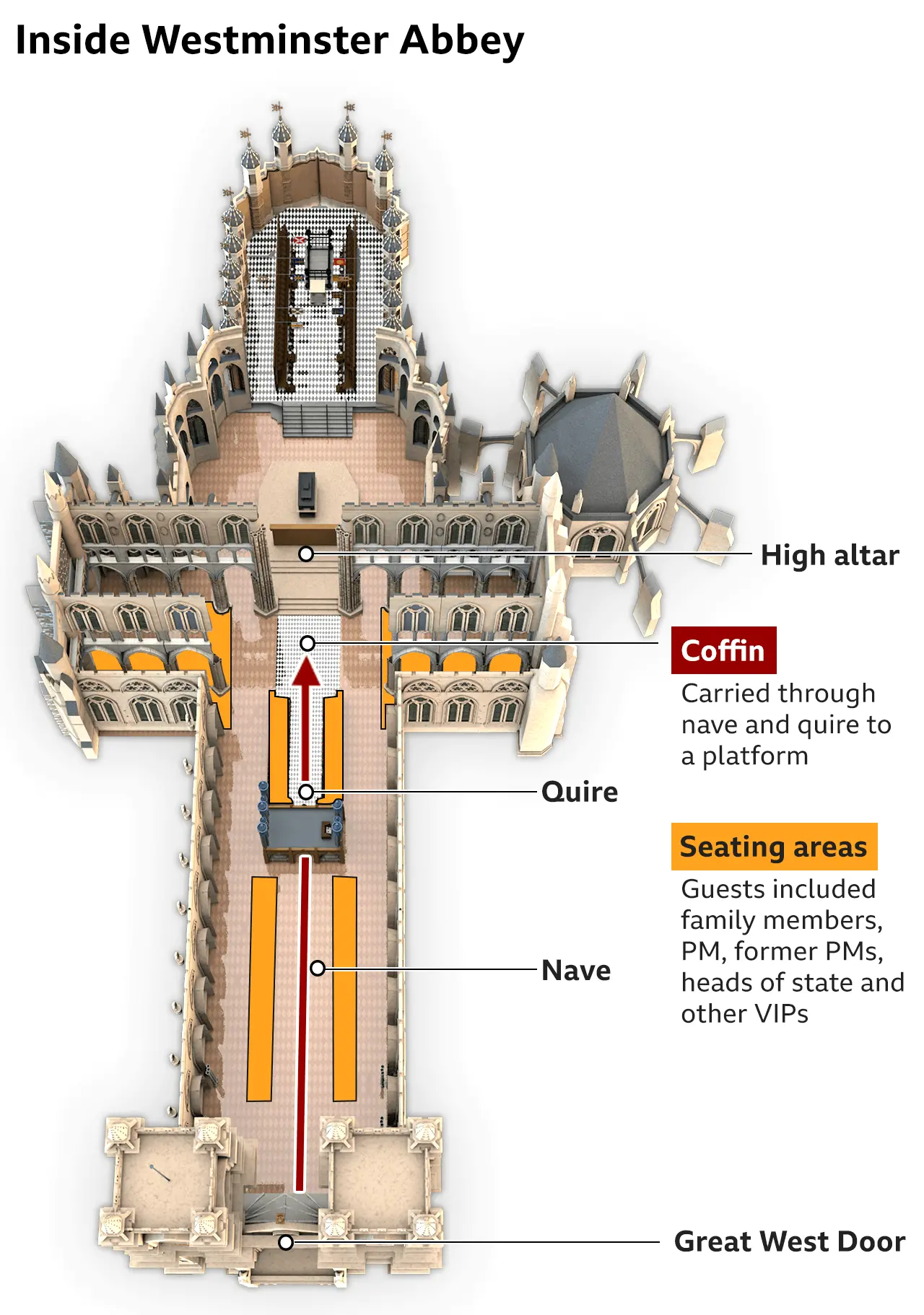
There hasn't been a monarch's funeral service in the abbey since the 18th Century, although the funeral of the Queen Mother was held there in 2002.
The service was conducted by the Dean of Westminster David Hoyle, with the Archbishop of Canterbury Justin Welby giving the sermon. Prime Minister Liz Truss read a lesson.
The Dean began the service by speaking of the Queen's "unswerving commitment to a high calling over so many years as Queen and Head of the Commonwealth".
Among the hymns was "The Lord's my shepherd" sung to the Crimond tune, which hails back to a parish in Aberdeenshire not far from the Queen's Balmoral estate, the location of her death. The hymn was also sung at the Queen's wedding to the Duke of Edinburgh.

Towards the end of the funeral service the Last Post - a short bugle call - was played followed by a two-minute national silence.
The national anthem and a lament played by the Queen's piper brought the service to an end just after midday.

The Queen's coffin was then drawn in a walking procession from Westminster Abbey to Wellington Arch, at London's Hyde Park Corner.
With the route lined with military personnel and police, Big Ben tolled at one-minute intervals as the procession moved slowly through the streets of the capital. Gun salutes were fired every minute from Hyde Park.
Crowds of mourners lined the route to catch a glimpse of the coffin and military parade, which stretched for more than a mile and involved hundreds of members of the armed forces.
 MOD
MODThe procession was led by the Royal Canadian Mounted Police and was made up of seven groups, each with its own band. Members of the armed services from the UK and the Commonwealth, the police and the NHS were involved.
Once again, the King and members of the Royal Family walked behind the gun carriage bearing the Queen's coffin.
Camilla, the Queen Consort, the Princess of Wales, the Countess of Wessex and the Duchess of Sussex joined the procession in cars.
Once at Wellington Arch, the coffin was then transferred to the new State Hearse for its final journey to Windsor Castle. Crowds threw flowers towards the vehicle as it passed by.
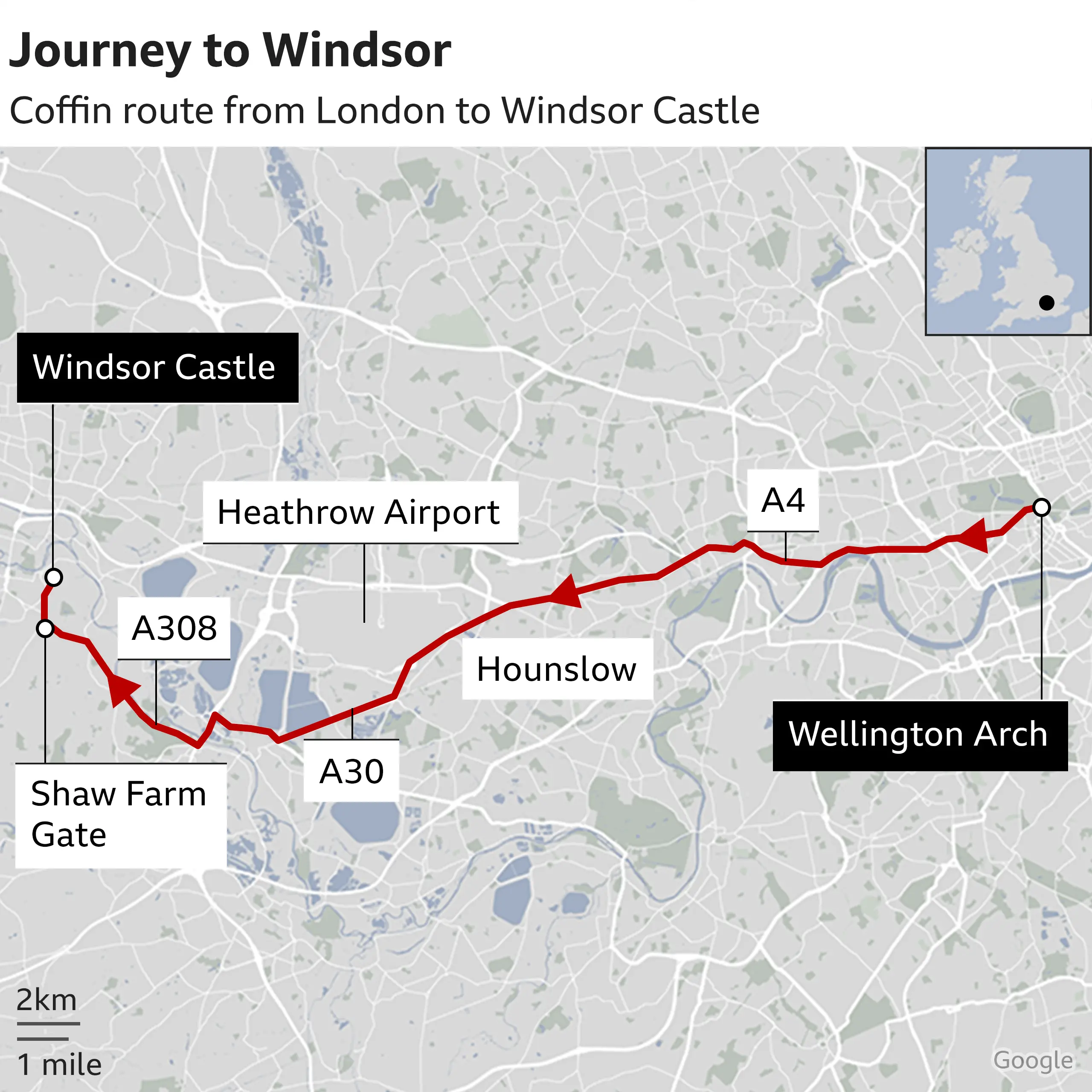
Windsor Castle, continuously inhabited by 40 monarchs across almost 1,000 years, had special significance to the Queen throughout her life. As a teenager she was sent to the castle during the war years as London faced the threat of bombing, and more recently she made it her permanent home during the coronavirus pandemic.

The hearse arrived in Windsor just after 15:00 and continued in walking procession up Windsor Castle's Long Walk.
Crowds and members of the armed forces lined the three-mile (5km) avenue.
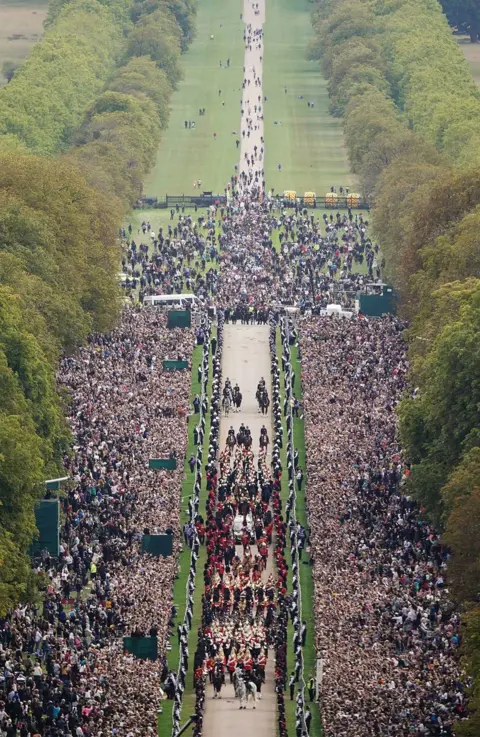 PA Media
PA MediaThe King and senior members of the Royal Family joined the cortege in the Quadrangle in Windsor Castle.
The castle's Sebastopol and Curfew Tower bells tolled every minute and gun salutes were fired from the castle's grounds.

Just after 16:00, the coffin entered St George's Chapel for a committal service.
St George's Chapel is the church regularly chosen by the Royal Family for weddings, christenings and funerals. It is where the Duke and Duchess of Sussex, Prince Harry and Meghan, were married in 2018 and where the Queen's late husband Prince Philip's funeral was held.

Attended by a smaller, more personal congregation of about 800 guests, the committal service was conducted by Dean of Windsor David Conner, with a blessing from Archbishop of Canterbury Justin Welby.
The service, whose congregation was largely made up of current and former staff from the Queen's household and private estates, included traditions symbolising the end of her reign.
The Imperial State Crown and the Sovereign's orb and sceptre were removed from the top of the coffin by the Crown Jeweller, separating the Queen from her crown for the final time.
At the end of the last hymn, the King then placed the Queen's Company camp colour, or flag, of the Grenadier Guards on the coffin. The Grenadier Guards are the most senior of the Foot Guards carrying out ceremonial duties for the monarch.
At the same time, the Lord Chamberlain, former MI5 chief Baron Parker, "broke" his wand of office and placed it on the coffin. The snapping of the white staff signals the end of his service to the sovereign as her most senior official in the Royal Household.
The Queen was then lowered into the royal vault and the Sovereign's piper played before a blessing and the singing of God Save the King. The performance by the piper at Windsor was something the Queen had personally requested, Buckingham Palace said.

In the evening, at a private family service, the Queen was buried together with her late husband, the Duke of Edinburgh, at the King George VI Memorial Chapel, located inside St George's Chapel.
Her marble slab is engraved ELIZABETH II 1926-2022.

